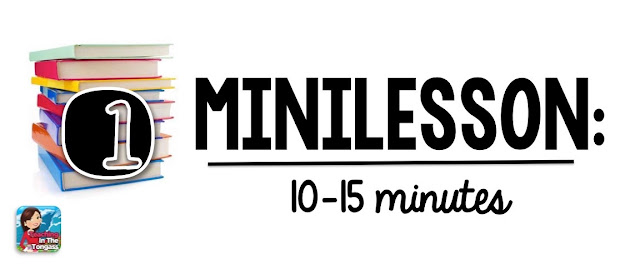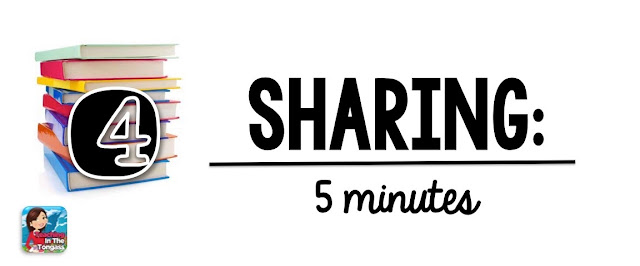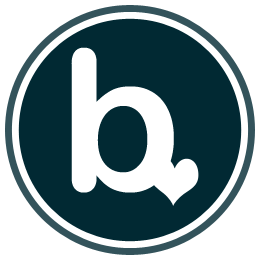Hi friends! This is Jen from
Teaching in the Tongass and I'm blogging today to tell you all about how I run my Reading Workshop. Depending on how long you've been teaching, you may or may not have done a Reading Workshop in your classroom. I know every classroom sets up their reading block differently, but this post is a peek at how I run my Reading Workshop. I remember starting teaching and not really having a clue how to run my reading block--the education textbooks we read in my literacy courses and what we did in my student teaching (4th grade) were surprisingly not that helpful when it came down to figuring it out for my own 2nd grade classroom. So, I wrote this post with my former first-year teacher-self in mind, but you're welcome to check it out and see if there's anything helpful to you as well!
I'll break each component of my Reading Workshop down into the 4 basic parts.

Depending on what grade you teach and what your students need, this can be a variety of things. You can focus on comprehension, vocabulary, decoding...basically whatever you know your students are going to need (this can be determined from your reading conferences or even guided reading). The point of this time of your reading workshop is to try to narrow in on something the majority of your students can benefit from. It could be anything from using context clues to figure out the meaning of a word (vocabulary strategy) to making a prediction about what will happen next in a text (comprehension strategy). You might use a few different strategies from your teacher "hat" or bag of tricks, but my personal favorites are anchor charts (poster you can prep ahead of time--write on with class and display for later referencing) and teacher think-alouds (talking to yourself while reading..."Hmm, I think bandage means band-aid because they sound alike and he's talking about putting it over his ouchie.").

At this point in you reading workshop, you (the teacher) read a book. Now there are many different ways people like to do this part, but I personally like to use highly engaging trade books that either a) go with a theme/holiday we might be talking about or b) emphasize the minilesson you previously taught. If you have a reading program your school uses, this would probably be your weekly text. You might have students following along with you, or you might have them just listening while you read. The purpose of this time is for you to model what real reading sounds like and what real readers do. For instance, if you are focusing on making predictions, you would want to stop every so often while you are reading and ask yourself/your students what might happen next. Now, as an adult, I don't often stop reading and think to myself, I wonder what will happen next? But, in a microsecond, I actually do that. You probably do as well. But, this doesn't always come naturally to readers, which is why we have to model these strategies aloud for our students. Modeling what reading sounds like enhances reading fluency, which is why making time for a read-aloud daily is so important. And if you can do special voices for different characters, you just earned major bonus points and your students will love you even more than they already do! Think about it. Do you like to listen to students read like robots, or with expression? It's the same for them. Also, kids love it! It just makes common sense. Don't be afraid, I promise they won't run home and tell their parents that your version of the B.F.G is not what they pictured.

This time is your "meat" of the reading workshop. It's where students get to practice what you've been teaching and show off their skills. There are many different ways to organize and manage this time, and throughout your teaching career things will of course shift and instructional coaches/coteachers/admin/even bloggers will tell you what's best. I'll just tell you what I did and how it worked for me.
Independent Reading:
A little back story first. I started off my teaching career with plain old independent reading. Students read, it was great. Then, my principal at the time said, "You can't have them reading for an hour! They're in 2nd grade...they're just babies! You've got to get them doing centers." I thought, "what on Earth are centers??" And quickly bought up the entire Lakeshore Learning catalog of centers. No joke. Then, I had them all organized in tubs with "I can" statements on each tub so that when said principal walked in they could recite what the tub said when she asked "What are you learning?" (genius, I know haha). While students were working on the centers with the skills I had just taught or reviewed, I would be managing a guided reading group. Everyone was quiet, on-task and to anyone doing a walk-through, it looked fantastic. I had it all figured out. Or so I thought. Then, one day when I started actually looking at their work they had turned in after checking it off, I realized, "Hey...these kids aren't getting these skills I'm putting in tubs! I will just have to review it with them tomorrow before centers." But gosh darnit, they didn't. That went on for a few months (shameful, but it was my first year, I was figuring things out at a snail's pace) until finally, FINALLY, I went to the literacy leader (this was before the word "coach" came into play) across the hall. The literacy coach across the hall, one of my favorite people, said, "Centers? They can handle independent reading." And that was that. I didn't know who to listen to. My boss or my mentor. So...long story short, I listened to my GUT and went with independent reading with a splash of accountability. Enter, my reading journals. The very first item I put in my TpT store was this my Reading Journal freebie. Yes, that date says 2011.

These reading response journals have been prettied up with different clipart since those days, but the content remains the same and I have used them for 7 years.

Basically, students read a book, fill out a reading response, and choose another book. I didn't have book boxes, so I didn't use them. They would simply get up and go get another book (at their DRA level). And yes, I occasionally would have students that needed me to limit how many times they could get up. In those instances, I would simply let them choose about 5 books to keep at their desk (same idea as a book box). There are 4 different journals I use and they all correspond to independent reading levels (A-M). You can check out the the first one for FREE by clicking
here. As students move up in reading ability, I give them the next reading journal to complete (I make them into packets of about 20 responses each). I typically model how to complete a response during a guided reading lesson, but it can also be done whole group. My favorite thing about these are that they can be used all year long, and at any time. They can be implemented in homework, guided reading, sub plans, early finisher work, or my personal favorite, drop-of-the-hat situations ("What's that? the nurse needs to talk to me in the hall and it absolutely can't wait? Kids, please get your reading journals out now."). I can't tell you how much I love the versatility of these things. Seriously.
Conferring:
I like to meet with students to discuss their strengths and areas of improvement at least once a week (usually on Fridays). That doesn't mean I meet with every student on every Friday. I usually have a checklist and rotate through about half the class one week and the other half the next week. I like to keep a quick record of what we talk about on this sheet and I find it's super helpful in guiding our discussions. You can grab it FREE
here.
I usually have them read a bit aloud and tell me what they're reading as well, but if I'm running low on time, the reading journal is a quick way to get a glimpse at what they've been up to and what they've been reading.
I like to organize my classroom library by level so students can easily find a book at their "just right level," but many teachers organize by genre to avoid any stigmas. Do what feels comfortable to you. I feel like if you can create an environment where students don't feel ashamed of their abilities, rock the leveled library. If you are unsure and want to avoid any issues, rock the genre library. If you start something and need to change it mid-year, lesson learned. That's what this job is all about....growth! And don't get me wrong, we had plenty of "Choice Reading" so students could choose whatever title they wanted (so you can stop thinking I'm Cruella now).
Guided Reading:
This is typically done at a kidney/u-shape/horseshoe table like this. This is what you (the teacher) are doing while your other students are reading independently.

Students in small groups (anywhere from 1-7 kids if I'm wearing my honest hat, but ideally 5 kids) meet with the teacher. I like to sort my guided reading groups by reading level (my preference is to use a DRA, but you can use DIBELS as well). A normal group might look like 4 kids between level A-3, 4 kids between level 6-8, 5 kids between level 10-12, and 5 kids between level 14-16. You may notice that I don't meet with my higher readers (above 16) in that scenario. It's true. I typically work more with them during our 1-1 conferences on Fridays because I know they're more independent. It all depends on your class and where your students are. You can also structure your guided reading to be shared with another teacher at your grade level--we call that Walk to Read (but that's another post for another time) so that you can maximize your group time and meet with all students each week.
Now, many different programs out there have different ways to do a guided reading lesson. Most reading programs have a guided reading component included. Depending on your class, you can probably sort them into near-ability groups and end up with 3-5 different groups. You'll want to see your kids with higher needs every day. Every classroom schedule is different, but I included my own sample schedule in the download below. I also made these binder covers for my groups, you can click below to grab this FREEBIE.
I typically start of with some word work (could be basic letter/phonemic awareness or even multisyllabic words/meaning) as a warm-up (typically 2-3 minutes). This may correspond to a phonics skill we are practicing with the class, but it typically doesn't. It could be a decoding strategy or even a spelling pattern I know we'll come across in the text (always preview the book yourself so you can take advantage of knowing those tricky words that might trip them up).
If you downloaded the above schedule, you'll see it has "observe" in each box. That's where I put students that I want to listen to carefully (if you use a running record, this would be where you can write their name). This helped me a TON. I needed to keep track of rotating through the students in each group or I might not remember who was absent on Monday and still needed me to hear them read. Have I mentioned I have terrible short term memory?! #cantdoitall So, while the other students work on their word work warm up, I would be doing a quick check (usually a running record--they read a bit of text and I follow along marking where they made mistakes and what kind of mistakes they were) in on one student each time that group meets (and rotate through the other students as the week goes on).
Then, I pass out the books (everyone has the same one). Depending on the reading level or strategy we are working on, I might do a picture walk (flip through and discuss the pictures--pique interest, use words that may come up in the text, activate prior knowledge). My personal style for guided reading includes students in the group all whisper reading the same page as I lean in and offer help when needed. As students finish the page at different times, I have them wait with a fisted thumbs up on their page. When everyone in the group has finished the page, I ask them to read the page aloud altogether. Depending on the level of text, I can sometimes ask a few comprehension questions that promote deeper thinking (visualizing, predictions, inferring, etc.), but most of the time we end up focusing on decoding strategies. We usually work through one book each day, rereading the previous day's book sometimes, but not always. It all depends on the complexity and length of the texts you are using.
In my guided reading area, I usually have the books the group will be reading in a color-coded book box, along with any corresponding worksheets/word work activities. I have a set of these that I use (from Really Good Stuff).
Since I organize my groups by color, I keep each group's supplies in a separate container with matching folders (I prefer the plastic ones I can reuse year to year--these 3 prong folders from Walmart are my favorite).
Here is a little guide for guided reading supplies I put together that you may find helpful. Feel free to Pin for later!
Disclaimer: The following contain Amazon affiliate links.
1.
Write and Wipe Pockets, 2.
Dry erase word boards 3.
Magnetic dry erase boards, 4.
Kleenslate dry erase markers w/eraser tip, 5.
Wall pops dry erase tabletop removeable stickers, 6.
magnetic word builder, 7.
colored overlays, 8.
highlighter tape, 9.
flat marbles, 10.
tabletop display, 11.
martian/witch fingers, 12.
sticky notes, 13.
whisper phones, 14.
finger flashlights

The final part of Reading Workshop is Sharing. In my classroom, I had to force myself to make this part of the plan. It can be so easy to rush through everything each day and time runs out more often than we all would like it to. So, what does sharing look like in my classroom? It's pretty basic. I usually call on 1-3 kids (time dependent of course) to share what they did today "that good readers do." I use the same language every. single. time. Possible answers are things like, "I made a prediction," or "I figured out what ___ meant by using context clues." I like to follow up with questions just to keep them on their toes and make sure they aren't just spewing back sentences they've read from our anchor chart about "What Good Readers Do."
So that's it! That's the gist of how I run my Reading Workshop. I have never claimed to be a literacy expert or besties with Fountas and Pinnell, but I do have 7 years of teaching under my belt (not a ton of time, I know), so I am only writing from my own experience and what has worked for me. Oh, and I made this little Reading Expectations Poster set (a freebie!). Click below to grab it.
If you have any questions, thoughts, or something that you've loved or hated about your own Reading Workshop, please feel free to leave a comment below.
-Jen


























































